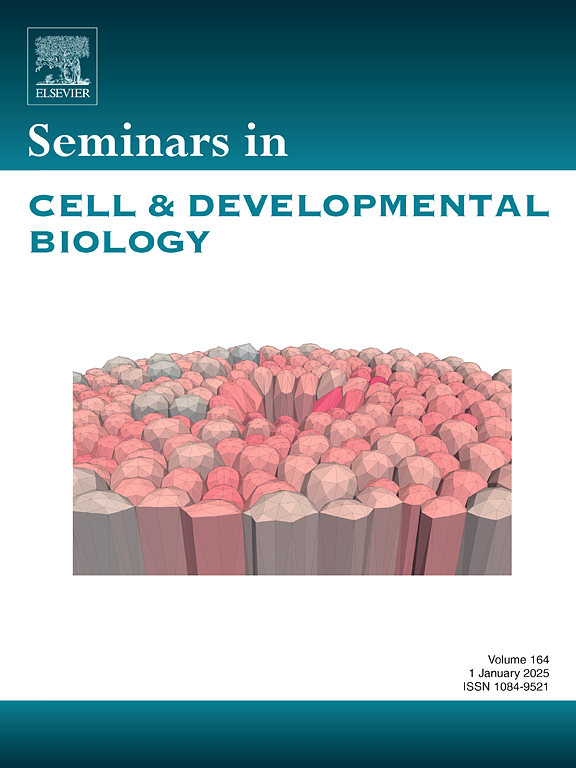C. elegans: An elegant experimental system for the study of cilia biology
IF 6
2区 生物学
Q1 CELL BIOLOGY
引用次数: 0
Abstract
Caenorhabditis elegans is a genetically tractable organism that has become one of the leading in vivo models for cilia research. Cilia are not required for viability in C. elegans, as only a subset of sensory neurons is ciliated in this organism. Yet, C. elegans cilia exhibit remarkable structural and functional diversity akin to their mammalian counterparts. Since the core mechanisms of cilia assembly are evolutionarily conserved, research in C. elegans has informed studies in other organisms on cilia biogenesis, trafficking, and functions and has provided key insights into mechanisms of cilia dysfunction in human disorders. Here, we provide a general overview of the C. elegans model for cilia research. Specifically, we review different cilia types and their underlying ultrastructural organization, discuss trafficking mechanisms for ciliary proteins, describe emerging functions of ciliary extracellular vesicles, and highlight a broad swathe of sophisticated tools available in C. elegans for studying multiple aspects of cilia biology.
秀丽隐杆线虫:研究纤毛生物学的一个优雅的实验系统
秀丽隐杆线虫是一种遗传易感的生物,已成为纤毛研究的主要活体模型之一。纤毛不是秀丽隐杆线虫生存所必需的,因为在这种生物体中只有一部分感觉神经元是纤毛的。然而,秀丽隐杆线虫纤毛表现出与哺乳动物纤毛相似的显著结构和功能多样性。由于纤毛组装的核心机制是进化保守的,因此秀丽隐杆线虫的研究为其他生物对纤毛的生物发生、运输和功能的研究提供了信息,并为人类疾病中纤毛功能障碍的机制提供了关键见解。在这里,我们提供秀丽隐杆线虫模型纤毛研究的总体概述。具体来说,我们回顾了不同纤毛类型及其潜在的超微结构组织,讨论了纤毛蛋白的运输机制,描述了纤毛细胞外囊泡的新功能,并强调了秀丽隐杆线虫中用于研究纤毛生物学多个方面的广泛的复杂工具。
本文章由计算机程序翻译,如有差异,请以英文原文为准。
求助全文
约1分钟内获得全文
求助全文
来源期刊
CiteScore
15.10
自引率
1.40%
发文量
310
审稿时长
9.1 weeks
期刊介绍:
Seminars in Cell and Developmental Biology is a review journal dedicated to keeping scientists informed of developments in the field of molecular cell and developmental biology, on a topic by topic basis. Each issue is thematic in approach, devoted to an important topic of interest to cell and developmental biologists, focusing on the latest advances and their specific implications.
The aim of each issue is to provide a coordinated, readable, and lively review of a selected area, published rapidly to ensure currency.

 求助内容:
求助内容: 应助结果提醒方式:
应助结果提醒方式:


